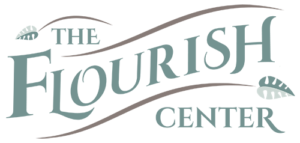
by Jen Owen, N.P. | Aug 28, 2020 | Integrative Medicine
I don’t know about you, but the “COVID 15” was really real. If you don’t know what I’m referring to, there’s a saying that kids go away to college and gain the “Freshman 15” since they’re away from home, eating more junk food, and no longer on a regular schedule. A lot of people joked that the “stay-at-home orders” caused them the same problems, and the same subsequent weight gain.
It truly did happen to me. My gym closed, so I wasn’t going to my regular three-day-a-week exercise class and potato chips seemed to taste better than ever. Add that to beginning peri-menopause and voila, I was heavier.
Despite all I’ve learned about eating intuitively and mindful eating, I found myself thinking negatively about my body and turning to traditional dieting regimens to solve this weight gain. I tried counting calories and points and all that stuff. Most tries only lasted 2-3 days and I got mad and quit. I didn’t want to feel deprived and I really didn’t want to track every morsel that entered my mouth.
I took a careful look at how I was feeling about my body, the foods I was eating, and the lack of movement. I made four simple changes and easily lost 10 pounds.
Now, before I tell you what those four things were, I want to say something really important. I didn’t want to lose weight because I want to be super thin or because I felt ugly or anything of the sort. I wanted to lose weight because I felt inflamed, tired, and my body aches and pains had increased. I wanted to feel vibrant, energetic, and have less pain, and I knew that holding the extra weight was contributing.
Okay, here’s what I did:
1~I looked in the mirror and I said to myself, ‘I love you at any size. Let’s do this to feel more fit, strong, and stable!’
2~I took a look at what time of day I was craving those chips…late afternoon. We were eating dinner around 8pm and I was getting kind of hangry around 5:30-6. So, I moved our dinner time up to 6:30-7 and I eat a little fruit and/or nuts if the hangry sets in. It actually doesn’t very often, because I’m already cooking and my body knows that great food is on the way.
3~When I get hungry through the day, I ask myself, ‘What sounds really good’ and then I eat that. We always have lots of fruits and vegetables around, so often I eat those. Sometimes popcorn sounds good, so I eat that. I actually haven’t been buying chips since they usually make me feel bad when I eat them anyway. Now, if a food feels bad after I eat it, I take note of that, and it’s easier to avoid later.
4~I started going for a walk every morning in the gorgeous woods by my house and felt inspired to add bursts of running on the trails to get my heart rate up. After my meditation/visualization and goal-setting for the day, I now go right out the door and get my walk done. This is what feels great, not what I think I “should” be doing. (And, I get my nature time in, too!)
And, that’s it!
I don’t plan to keep weighing myself, because it’s not about the number on the scale. I did it more out of curiosity to see if all of this “worked”.
I still have a long way to go to understand exactly how to eat intuitively. I’m sure there are even things in this very blog that still don’t follow a true “body-positive” way of looking at things. And, I’m open to learning.
I’m writing this mostly to say to you, you are beautiful no matter what shape or size you are or despite what any scale says.
What if you slowed down and listened to what your body wants you to eat and how it wants you to move?
What if we all stopped “shoulding” ourselves around food and exercise?
What if we based our health on how we feel and not on what the scale says?
I love that I now have this “proof” that this is exactly what works to bring my body to the weight that is most optimal for me and to feel as energetic and fit as I’ve been longing to feel.
I’d love to hear from you about any of this. Please comment below with any thoughts or questions.
Happy mindful eating!

by Jen Owen, N.P. | Aug 21, 2020 | Mind-Body Medicine
Whenever I mention the “M” word to my clients, I often get the same blank stare. Then almost immediately I hear the usual excuses,
“I don’t have time”
“I can’t do it”
“It never works for me”….and on.
That “M” word is Meditation.
Of all the health and wellness tools I’ve added to my own toolbox, meditation has been THE MOST important.
I started meditating almost every day about 7 years ago when I opened my first practice.
A few weeks ago, my exercise class started back again since being canceled due to COVID. It happens at 8am, so I had to rework my routine. I literally forgot to meditate. A couple of weeks in, I noticed I was becoming more anxious and grumpy by the end of the day. I got up a little bit earlier and restarted meditating and voila–back to normal!
I didn’t think I could meditate at first either. Whenever I tried to sit on a cushion and be “zen”, my mind would wander, and my back would hurt.
I kept with it.
I realized that I do much better when I lie down. Regardless of what you might read, meditation still works when you lie down. (Now, I do recommend getting out of bed and lying somewhere else, because otherwise, you are likely to fall asleep).
I started using guided meditations where someone online would guide me to breathe, relax all the various parts of my body, and help me stay focused. Guided meditations are a great way to start out!
Now, I can play music and meditate on my own most days and I still used guided help when I’m overstressed or can’t focus.
There are also great free apps you can use like Headspace and Insight Timer to help you get used to meditating.
I have a challenge for you:
~Try getting up and meditating for 3 days in a row, even if it’s only for 5-10 minutes.
~When the 4th day comes, don’t meditate.
~Notice the difference in your day on that 4th day: How is your energy different from the 3 days prior? How is your ability to handle stress? What other differences did you observe from meditating and not meditating?
Once I started meditating every day, it became very clear how different my days were on days when I skipped meditation. I’m quicker to react to difficulties, I crave more sweets and salty carbs, I’m less patient, and I don’t have as much energy.
When I take even 15 minutes in the morning to meditate, my days go MUCH better.
So, if you’re not a meditator, you CAN be.
It’s more important than ever right now to take care of your nervous system and your soul.
Meditation is one of the best and easiest ways I know to take care of both!
I’d love to hear your experience with the challenge. Please comment below and tell me what happened for you.

by Jen Owen, N.P. | Aug 6, 2020 | Integrative Medicine, Mind-Body Medicine
One of the most common things I’m seeing in almost every patient right now is shallow breathing.
And, wearing a mask everywhere isn’t helping.
Take a moment right now and notice your own breathing. Are you breathing deep down into the bottom of your lungs?
Before you read on, I want you to take three deep breaths in and out. Stop right now and do it.
Breathe deeply (your lungs go all the way down into the bottom of your rib cage).
See and feel your rib cage moving up and down.
Did you do it?
Okay.
Now, notice how you feel now as opposed to before you took the breaths. Better, right?
Perhaps your breathing is a little slower, maybe your shoulders relaxed a bit, maybe you don’t feel so stressed?
Deep breathing is free and easy and the benefits are many. It also only takes a couple of minutes to make a big difference.
One of my favorite breathing techniques is 4:7:8 Breathing.
I learned this technique from Dr. Andrew Weil many years ago when I was working night shift. I would do this breathing technique any time I needed to sleep. It gave my body the cue that it was time to sleep no matter what time of day or night it was.
And, 4:7:8 Breathing isn’t just for sleep. It can be done any time during the day for a refresher, especially with all the sitting most of us are doing. Getting oxygen deep into your lungs helps to bring more oxygen to your entire system and keeps the bottom lobes of your lungs healthy. When the bottom lobes aren’t getting enough oxygen, you might feel short of breath or anxious.
Here’s how to do it:
~Place the tip of your tongue to the roof of your mouth on that place that separates the teeth from the roof of your mouth (even if you forget this step, you’ll still get benefits).
~Breathe in as you slowly count to 4.
~Hold that breath for a slow count of 7.
~Exhale all the air with a little force for a count of 8.
Repeat this cycle 4 times.
That’s it!
Try it now and see how you feel after you do it. It seems to take people from the fight-or-flight mode into the rest and digest mode quickly and easily (learn more about this here). Want to watch a live demo? Here’s one for you on the FLOURISH Facebook page.
I recommend doing this at least a couple of times a day if you sit a lot and during stressful times. It’s also very helpful to do before bed if you struggle with sleep issues.
An Integrative approach to healthcare always includes practical tools like this breathing technique. Instead of always going right for a medication, we look for underlying causes. Lack of proper breathing is a very common cause of anxiety and stress, and even gastrointestinal issues.
If you’d like to experience an Integrative Medicine appointment first hand, I invite you to see me in my clinic. You can find more information here.
I’d love to hear how more deep breathing goes for you!




Recent Comments